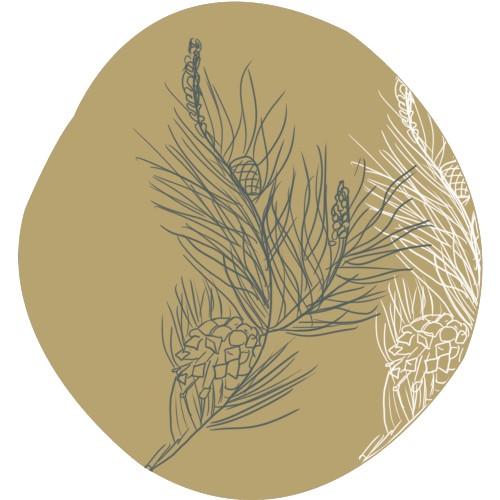Scots pine
Its resinous, slightly lemony fragrance evokes memories of walks in the forest.

Its resinous, slightly lemony fragrance evokes memories of walks in the forest.
The Scots pine is the most famous member of the pine and fir family. Its characteristic bark is scaly and reddish-ochre in colour. Its longevity is exemplary. Its characteristic smell, warm and resinous, is rather pleasant: it can be found in its essential oil after distillation of the needles.
Internal use:
External use:
External use
Scots pine has been used in various forms for centuries. Its essential oil is very rich in monoterpenes, purifying and stimulating molecules, to which are added esters and other minority molecules. Bornyl acetate, present at a low level, is however very useful as a relaxant.
Internal use
External use
External use
Scots Pine essential oil has a warm, harsh, woody, resinous aroma. It soothes the mind and makes it available to escape. It combats stress and fatigue. The Scots Pine, in an often ungrateful nature, is the very image of the will to exist, soberly and without whining. The words "verticality" and "anchoring" seem to us to fit its subject perfectly.
The information provided in this Guide to Essential Oils is for information purposes only: it is a synthesis of the properties described in recognised aromatherapy books and/or in accordance with ancestral and popular traditions. The properties presented are extracted from the works cited in the bibliography below. This is in no way a medical information or a list of indications.